Big 5 Degenerative Disc Disease Exercises: Part 2
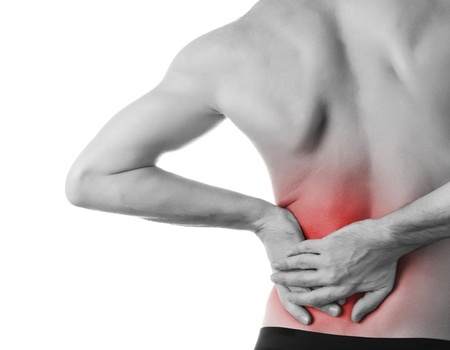
What is Degenerative Disc Disease?
Degenerative disc disease is a condition characterized by the thinning of the discs located between your vertebrae, and incorporating “degenerative disc disease exercises” can play a crucial role in managing this condition. Interestingly, the process of disc degeneration begins as early as 7 years of age, with the blood vessels that supply nutrients to the discs gradually disappearing by the age of 20.
Blood Vessels For Lumbar Discs Self-Destruct
As these blood vessels self-destruct, nutrients must rely on absorption (diffusion) to reach the disc’s centre. However, this method is inefficient, leading to a lack of nutrients for the cells inside the disc. Consequently, the cells starve, resulting in their death. These cells are essential for maintaining pressure within the disc. The more cells that die, the more pressure decreases in the disc, contributing to the degenerative process.
The Importance of Degenerative Disc Disease Exercises:
While degeneration may start around the age of 7, visible changes in X-rays typically don’t manifest until the fourth decade of life. Surgery is often a daunting option, and many individuals prefer non-invasive alternatives.
Degenerative Disc Disease Exercises as a Solution:
Degenerative disc disease exercises can play a pivotal role in managing this condition. By incorporating targeted stretching, strengthening, and aerobic exercises, individuals can alleviate pain, enhance flexibility, and fortify the supporting muscles.
Remedies for Lower Back Osteoarthritis:
Exploring remedies for lumbar degenerative disc disease AKA lower back osteoarthritis can shed light on effective strategies for degenerative disc disease relief. Exercises tailored to this condition can provide a holistic approach to managing symptoms and improving overall well-being.
See Also: Degnerative Disc Disease: Remedies For Lower Back Osteoarthritis That Provide Relief
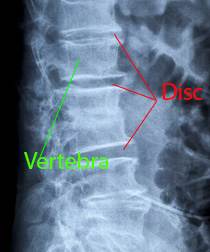
Visualizing Degenerative Disc Disease: A Journey into Understanding
In this picture above can you see that one of the discs between your vertebrae has a substantial space, while the one above appears smaller? This visual discrepancy is a telltale sign of degenerative disc disease. For the keen observer, the result manifests as the fusion of vertebrae below the red line. What may seem like a single vertebra is, in fact, the fusion of two.
While the natural process of disc degeneration cannot be halted, the good news is that you can take action to alleviate the associated pain. This is where the significance of degenerative disc disease exercises comes into play.
Understanding the Essence of Degenerative Disc Disease Exercises
Degenerative disc disease exercises encompass three crucial elements: Stretching, Strengthening & Stability, and Aerobic exercises.
Stretching: A Vital Component
Stretching serves as a pivotal aspect of managing degenerative disc disease. It plays a key role in enhancing the flexibility and mobility of the spinal muscles, offering relief from the muscle-related pain that often accompanies this condition.
Strengthening and Stability: Building Resilience
Degenerative disc disease exercises focus on making the muscles of the spine stronger. By doing so, they actively alleviate pressure on the joints and the disc itself. This emphasis on strengthening and stability becomes a cornerstone in managing the challenges posed by degeneration.
1. Degenerative Disc Disease Exercise
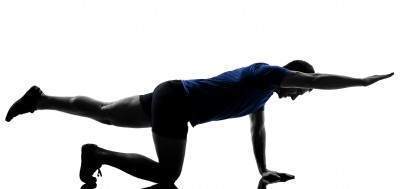
- Get into a crawling position with your hands and feet shoulder-width apart.
- Put a curve in your lower back.
- Brace your core by contracting both your abs and lower back.
- Lift your arm first. If this is easy, then lift your leg only. If that is easy, then lift the opposite legs and arms at the same time, for example, right leg, and left arm.
- Want to make it tougher? Try lifting an arm and leg on the same side.
- 3 sets of 10. If you are shaking a little or cannot balance right, you’re doing the exercise correctly. Make sure you are stable before going to the advanced bird dog.
2. Degenerative Disc Disease Exercise
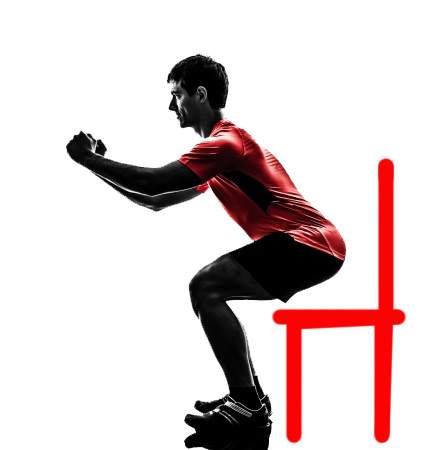
- Set up your Position: Stand in front of a chair with your feet shoulder-width apart, facing slightly more outward than your knees. Ensure the chair is stable and positioned where you can comfortably reach it.
- Adopt the Right Stance As if preparing to sit, stand tall with a straight spine. Your feet should be facing slightly outward to allow for a natural range of motion.
- Engage Your Glutes Initiate the squat by pushing your hips back, ensuring your buttocks stick out behind you. This movement engages your glutes and sets the foundation for a proper squat.
- Lower Yourself to the Chair Continue lowering your body, bending your knees, until you gently touch the chair with your buttocks. Maintain control throughout the descent, avoiding rapid movements.
- Practice Sets Perform 3 sets of 10 chair squats. Focus on the quality of each squat rather than speed. This controlled approach maximizes muscle engagement and reduces the risk of injury.
When you are stronger, take the chair away and go down until your knees are bent 90 degrees.
3. Degenerative Disc Disease Exercise
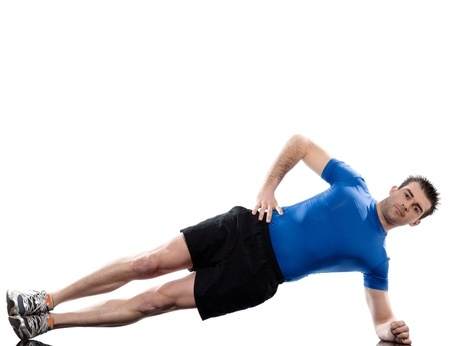
- Get on your side with your elbows underneath your shoulders.
- Your feet are stacked on each other.
- To make it harder you can raise up your arm like the picture above.
- Bring your pelvis down to the floor then bring it up again 10 times.
- Don’t rest when you touch the floor.
- Try to do three sets each day.
4. Degenerative Disc Disease Exercise
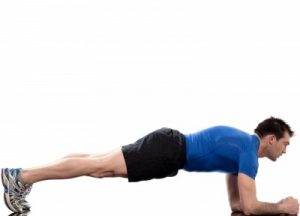
- Lie Face Down.
- Toes together and your arms shoulder-width apart.
- Get up on your toes and elbows like in the picture above.
- Your legs and body should form a straight line. Don’t let your butt sag down or come up too high.
- Hold for 30 seconds to start. Hold for up to 1 minute. Do it 3 Times.
5. Degenerative Disc Disease Exercise
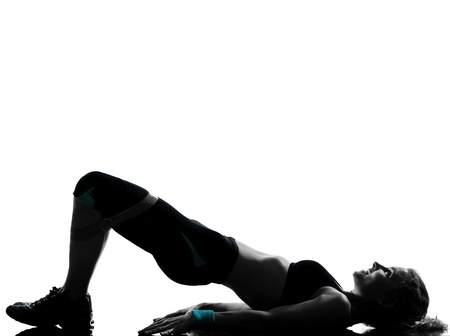
- Lie down face up with your hands down and knees bent.
- Tighten your abs and lower back muscles.
- Lift up till you form a straight line like in the picture above. Don’t go too high or too low.
- Come back down and when you touch the floor come back up right away (no rest- your back needs endurance).
- Try 3 sets of 10.
Aerobic Exercises
Try doing swimming if you are a swimmer. The best stroke is the breaststroke for most people. Try going 2-5 times a week for 20 minutes.
Walking is one of the degenerative disc disease exercises that are great for you. Walking puts less pressure on your disc and moves your spine. If you are in acute pain this isn’t for you but if you are simply sore a brisk walk can help. Try walking 20 minutes briskly every day. (slow down or stop if the pain keeps increasing or gets sharp)
Cycling should be done with more caution. Start with a stationary bike first if you have access to one. This way there is no bumping up and down.
More importantly, you should keep the arch in your lower back while cycling. By keeping the lower back arched you protect the disc and prevent aggravating yourself.
Degenerative Disc Disease Treatment
Part 1 (link below) went over the surgical options, which do get results but have some side effects you want to think about. They are Disc Fusion and Total Disc Replacement with a synthetic disc.
See Also: Degenerative Disc Disease: Remedies For Lower Back Osteoarthritis That Provide Relief
At this downtown Toronto chiropractic clinic, I use a combination of manual therapy, posture and pain treatments.
- Manual therapy includes mobilization and manipulation to improve the motion in the stiff joints and muscles. Mobilization is when your chiropractor moves your spine through its regular range of motion. Often it’s done while you are lying down, face-down or while you are lying down on your side.
- Manipulation involves moving your spinal joints until you can hear a pop. Just like cracking a knuckle. This movement is still within the normal movements of the joint but just a little further than mobilization. It’s safe and effective at helping break adhesions, increasing the range of movement, and more importantly, helping with pain for many problems.
- Myofascial Release Technique or Active Release Technique. When a muscle that is involved in your pain is found, your chiropractor will release the muscle so it is relieved of the tension and becomes looser making the pain associated with your muscle disappears. Your chiropractor will press on a trigger point and help move your joint through a full range of motion. After you learn how to do the movement, your chiropractor will simply push on the trigger point while you do the same movement. The process is repeated 3-5 times. Then you move to another set of points in the same muscle.
See Also: Active Release Technique Is It For You
- Postural Correction: When your posture is not good there is more pressure on the joints in your spine. Slouching or poking your chin out is a sign that certain muscle groups are too tight and others are too weak. The idea is to stretch the muscles that are too tight and strengthen the muscles that are too weak. I have dozens of people who come to the clinic who lack the strength but more importantly, endurance to keep their bodies in place for the sitting job that they do.
- Pain Treatments: Acupuncture, Laser and Shockwave therapy is used to decrease pain in and around your spinal joints and muscles
Tell us what you think in the comments below and like us on Facebook. I will answer all questions in the comments section here at this downtown Toronto Chiropractic clinic.
Related Categories: Back Pain, Elbow, Low Back Pain, Posture, Shoulder, Surgery


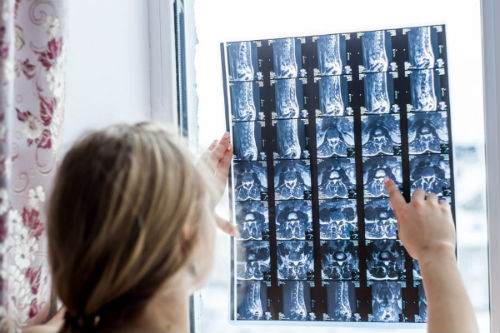

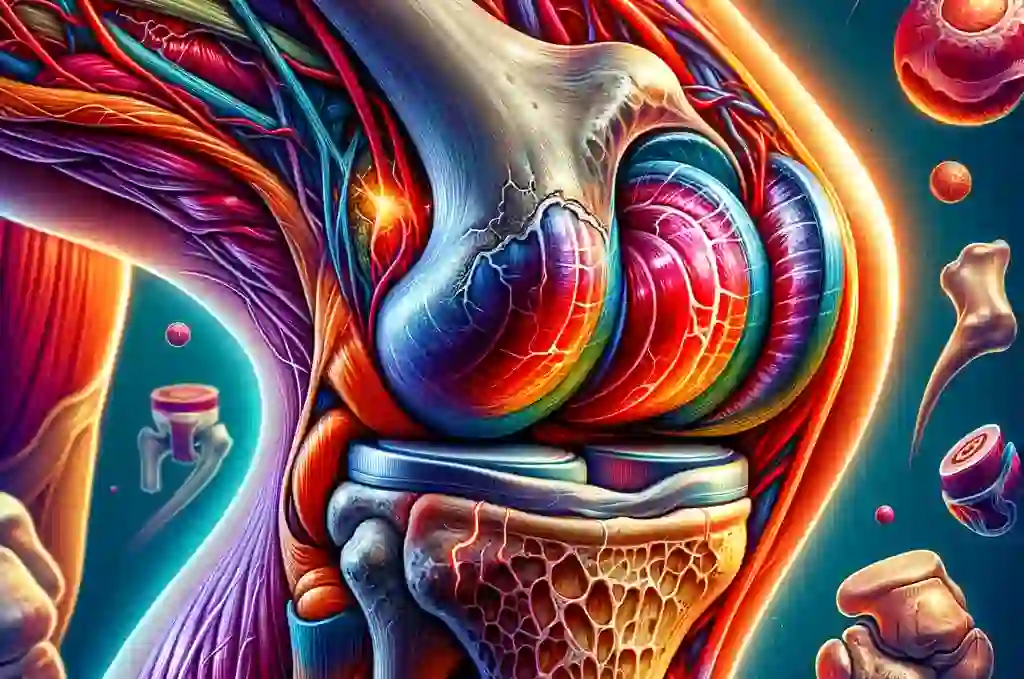
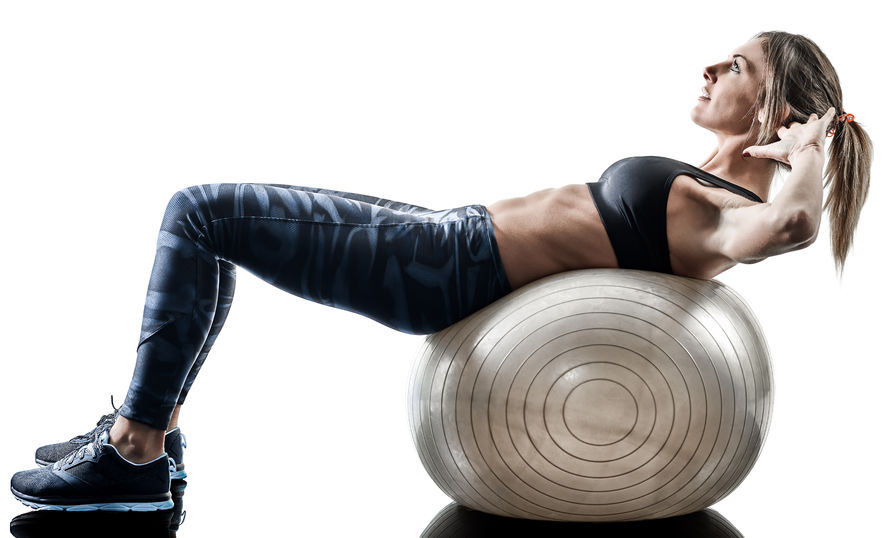
Chiro makes it worse, tried planks as described above (normally could hold for 20 seconds) can no longer do at all. Back muscles go immediately into spams and hurts to breath. I’m NOT overweight , walk 5k almost everyday. Bone scans show all is well…..can’t lie down to do most of the strengthening and stretching exercises. Can only lie down for sleep for Max 5-6 hours, then pain kicks in upon movement and breathing and moving is very difficult. Need to get up and do a zombie walk around the house, then apply heat for a good 15-20mins. Tried accupuncture, IMS, massage, physio…yoga stretches, core strength training.
Changed my diet for a more non-inflammation one.
Author
Thanks for your comment Frustrated Mac. Sorry to hear that your Chiro made you worse. While I am not sure that your chiropractor made you worse, chiropractors are very diverse in the way they treat you. Chiropractors come from a myriad of backgrounds, education and employ many different techniques. One chiropractor is not going to treat you the same as the next chiropractor especially in the United States. I don’t know where you are from but they are very diverse most everywhere you go compared to physiotherapy. The next chiropractor may not have made you worse, if they see how sensitive you are a take a more conservative approach. Sounds like you have tied a variety of techniques, hopefully with some success lately. If you haven’t found something helpful yet then you might want to consider injections like lidocaine/cortisol combination or cortisol or even surgery. Hope that helps your lower back degenerative disc disease Frustrated Mac.
Hi Dr.Ken,
I hope you can offer some words of advice. I am a 29 year old female for the last year or so I have been experiencing some back pain and just kept going to my chiro, after seeing my pcp she recommended Physical therapy which I did for about 3 months. I have made some gains from all of this but something continued to not feel right. Finally my doctor sent me to get an MRI which shows two herniated discs at L4 and L5. The first is hitting a nerve and L5 is showing a slight tear. I’m really concerned and don’t know how to proceed I will be seeing a spinal specialist but do you have any words of advice? I’m a physically active person and love doing marathons, practice yoga and hiking. My husband and I want to start a family but now I’m left feeling overwhelmed and concerned if I will need surgery. Any advice or thoughts would be appreciated.
Author
Thanks for your question Vickie. The good news is that the vast majority of cases including cases like yours often do not need surgery. I would simply do these exercises. https://www.bodiempowerment.com/herniated-disc-part-2-the-best-exercises-for-your-herniated-disc/
The above is an opinion and not a recommendation. Hope that helps your degenerative disc disease. If you have any more questions feel free to ask. Downtown Toronto chiropractor Dr Ken Nakamura
It’s been 7 weeks now that I had hurt my back and I’m in a lot of pain when walking or standing. I have been on a lt of medication and nothing seems to help control the pain at all. I have degenerative disc disease, L4 L5 as well as facet joint syndrome. I have tried chiropractor treatment, electroids on my back, traction, acupuncture and massage. Nothing is helping at all. I have seen the chiropractor almost every day for 4weeks. I am seeing a homeopath/Bowden therapy in two days to try something different. Dr now wants to send me to get a cortisone injection. How long does it take for pain to go away? Is the pain from inflammation or nerves? I’m getting very frustrated. I’ve been off work for 6 weeks now. Does walking around cause more irration and inflammation? I don’t want to cause any more disturbance to my back. Looking fwd to hearing back from you. Thank you in advance! Heather
Author
Thanks for your question Heather. Why don’t you try doing knee to chest exercises while lying down on your back? You do this repeatedly holding for 1-2 seconds repeating 10 times. You should be done in about 30 seconds. If you have pain while standing or walking and little or no pain while lying down in some positions there is no inflammation. Also, after 7 weeks inflammation would have disappeared. If you do the right exercises in can be a couple of weeks more. Of course, there are no guarantees though. If you do the wrong exercises you might stay that way a long time but spontaneously get better. Most people don’t get better as they continue to do the things that makes them worse.
Hope that helps your degenerative disc disease. If you have any more questions for this Toronto downtown chiropractor I will do my best to give you a good answer. The above is an opinion and not a recommendation. Remember any exercise make you worse so I advise you to do this with the supervision of someone familiar with the exercises.
Degenerated l5 s1 disc shows large broad based left paracentral and left posterolateral and further more is written on my mri scan ! I have been facing minor pains from a few months but a few weeks back I went to the gym and I had a back excercise and suddenly I felt severe pain and I was not able to weigh on left leg and everytime my lefts part hurts now I am on bed rest since then and taking tablets ! Doing small excercises according to my doc
Author
Thanks for your comment Ikvinder. While long-term bed rest seems to help all of the research doesn’t say it will help. You should try the exercises here in this article. This is an opinion and not a recommendation. Please keep in mind you can get worse and need to be guided a professional as these exercises are not customized to your particular case.
Hope that helps your degenerative disc disease.
Thanks for this Dr. Nakamura.
I have one question. As my age 28, I suffering this pain within 4 months. I already made MRI and x-ray. In my MRI I have problem on my disc, it seems Died cells or no more blood. My question is, if I will do this exercises, until when? I will suffer the pain at the first time?
Author
Thanks for your question. You need to tell me your symptoms. Without details, I cannot give you my opinion.
Hope you understand it takes a lot more details about your degenerative disc disease to give you an opinion.